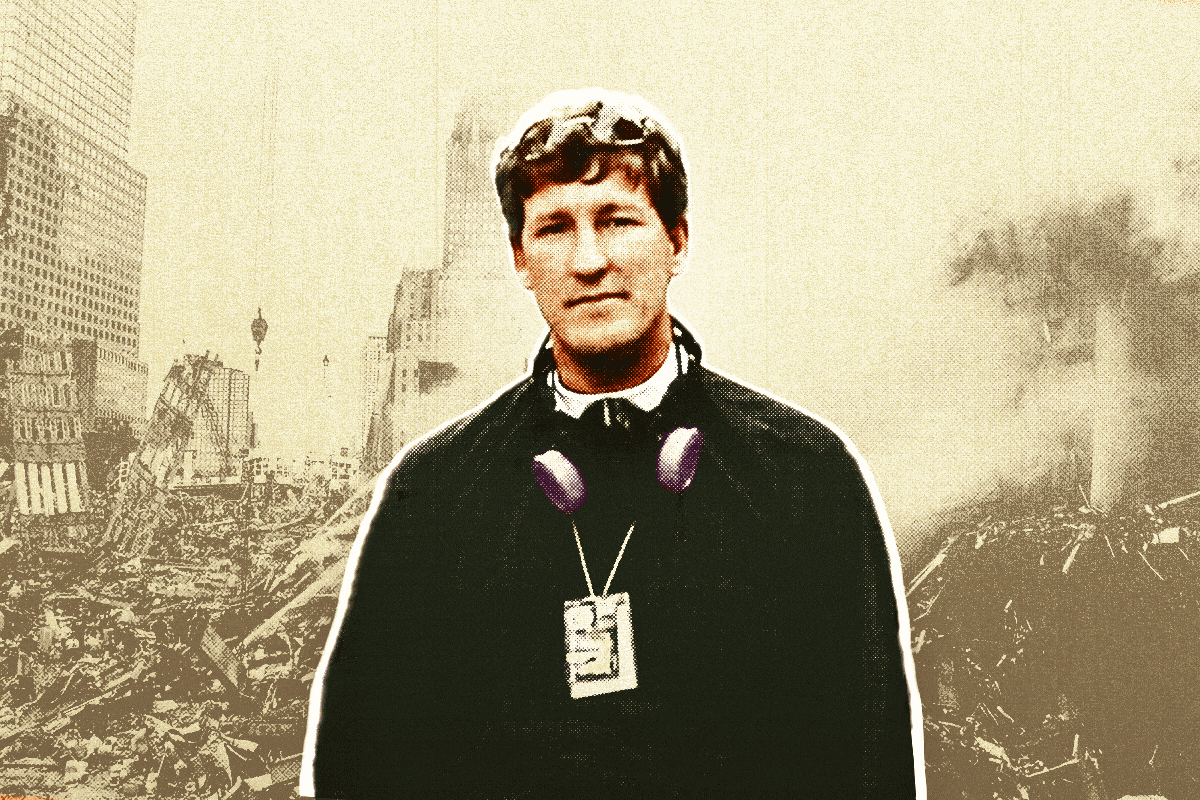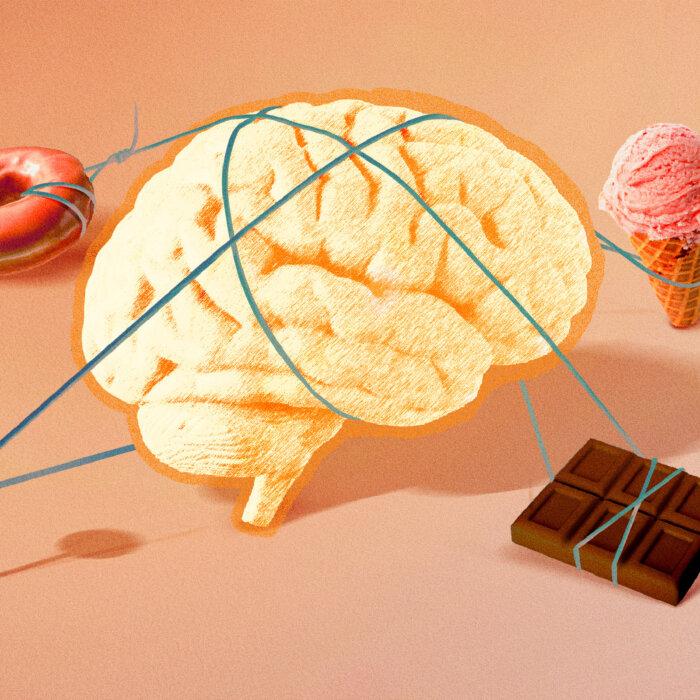Lyndon Harris landed his dream job in April 2001, when he was appointed priest of St. Paul’s Chapel, an Episcopal church on Wall Street in New York City. Yet months later, tragic events would forever alter the course of his life.
Harris lost his home, his wife, and even his health—he began suffering from post-traumatic stress disorder, depression, and lung damage.
From Hero to Victim
Just three blocks from the World Trade Center, Harris’s church stood witness to the tragedy of 9/11. The devastation played out before his eyes as the towers fell. In the aftermath, he saw firsthand the human toll: neighbors without homes, families searching for missing loved ones, and survivors with nowhere to turn.Faced with people’s overwhelming need, Harris coordinated a group of volunteers to set up a makeshift food station, serving hamburgers and hot dogs. Later, he helped advance these humanitarian efforts at Ground Zero by opening Saint Paul’s Chapel to serve the needs of first responders and Ground Zero workers, offering food, massages, chiropractic care, and counseling. The church also offered a place for people to sleep, even providing teddy bears to children—or adults—who sorely needed them.

“You see, my mother always taught me that if someone is in trouble, you help them out,” Harris said. “And then, if you can, you feed them.”
However, his church’s leaders had other plans. They shifted their focus from humanitarian aid to building preservation. Harris pushed back without results, and to his astonishment, church management neither acknowledged nor valued his efforts in helping people.
Months later, Harris joined a packed audience at the New-York Historical Society to see a documentary trailer the church had made on the ministry of St. Paul’s Chapel at Ground Zero. As he watched, he realized that although he had been the ministry’s initiator and central figure and worked more than 240 days overseeing the operation, he was not even in one frame.
It was as if he had been erased.
“It was as though nothing I ever did mattered to them,” Harris said.
While sacrificing 8 1/2 months at Ground Zero, he had incurred damage to his lungs and sinuses. When he saw the documentary trailer, a sense of victimhood began to emerge.
Feeling angry and betrayed, Harris resigned.
“And soon my life began to fall apart,” he said.
Shortly after, Harris lost his house, and his marriage failed. With an ailing body and mind, he suffered from depression and post-traumatic stress disorder.
His resentment lasted for a decade—he lived in a personal “Ground Zero.”
“Nelson Mandela said it best, ‘Not to forgive is like drinking poison and waiting for your enemies to die from it,’” Harris said.
“You know, I drank that poison, and sometimes it tasted really good. And every time I took a sip of that, a part of me died.
How Letting Go Improves Well-Being
Loren Toussaint, professor of psychology at Luther College and a leading forgiveness researcher, told The Epoch Times about a study he conducted with a sample of 1,423 Americans.The study found that forgiving yourself, forgiving others, and feeling forgiven by God strongly correlated to better mental health, physical health, life satisfaction, and happiness.

As the adage goes, “What you focus on grows.” Rumination triggers stress repeatedly and causes a continuous release of cortisol, according to Everett Worthington, professor emeritus at Virginia Commonwealth University and author of more than 50 books on forgiveness.

Cortisol is beneficial in the short term, but over time, it “negatively [affects] every system in your body,” Worthington told The Epoch Times.
Cortisol triggers the hypothalamic-pituitary-adrenal axis, the body’s alarm system, essential in the fight-or-flight response. However, if hyperactivated, it can harm the cardiovascular system, shrink the hippocampus (where memories are consolidated), and disrupt both the immune and gastrointestinal systems, Worthington said.
“Whenever you’re filled with anger and hatred, quite often you have a diminished desire to even want to live,” said Michael Barry, a minister who served as director of pastoral care at the Cancer Treatment Centers of America for 10 years.
The mental shift of embracing forgiveness rather than holding on to a grudge also profoundly influences our physical health.
When recounting a painful experience, you feel a knot in your stomach, your mouth gets cottony, and you start to sweat a little bit, Toussaint said. Although it’s imagined, your brain can’t differentiate it from the real thing, and your body relives the stressful experience.
Participants with forgiving thoughts didn’t have a strong reaction. Their heart rate, blood pressure, and brow muscle tension were lower and more relaxed. Forgiveness prevented them from reacting to hurtful experiences, giving them a muted or “buffered” stress response.


According to Toussaint, forgiving individuals tend to employ more effective coping styles for life stressors. They often have a more adaptive repertoire of coping strategies, frequently using problem-focused approaches.
The director of Stanford’s Forgiveness Project, Fred Luskin, explained to The Epoch Times that “the most important impact of forgiveness is the efficacy of knowing you can cope with life.”
In the face of adversity or unfair treatment, you can let go of the past, right your ship, and move forward with greater confidence, he said. By letting go of negative emotions such as resentment and fear, individuals gain positive ones such as kindness, love, and compassion, which confer their own health benefits.
Turning the Page
Harris said he had to untangle his victimhood and embrace forgiveness before he could find his way back to health.Pope Francis declared 2016 to be a jubilee year—a special year focused on forgiveness and mercy. That same year, Harris embarked on a pilgrimage to the Camino de Santiago.
A tradition on the Camino, Harris said, is to carry a stone with you and cast it over the cliffs of Finisterre into the sea after completing the long journey, to “release the burdens you’ve been carrying.”
Every step of the way, he thought about his life, past mistakes, and his inability to forgive—and let it all go, he said.
At the end of the journey, Harris said, he and his girlfriend, Maria, who accompanied him on the pilgrimage, threw their stones over the cliffs and “made declarations of intention about our future.” That’s when he proposed to her, and she said “yes.”

“I’m a new man with a new mission,” he said. “I’ve been spared a lot of challenges and a lot of pain. I’ve been so blessed.”
Harris’s mental and physical health is at an all-time high, with no trace of damage to his lungs and no feelings of resentment, he said. He is happily married to the woman of his dreams and works as a motivational speaker, spreading the benefits of forgiveness.
“All of us encounter tragedy, but we have to find creative ways to respond in order to be happy, resilient, resourceful, life-giving people,” he said. “And forgiveness is the absolute key to that—without question.
The Contour of Forgiveness: What It Is and Isn’t
“Forgiveness is not forgetting,” said Barry, who is also a forgiveness author.A painful memory consists of two parts: the pain and the memory. Just like a scar on your body, he said, “When you forgive someone, the pain goes away, but the memory remains.”
Forgiveness is also not just speaking words, Barry said.
He recounted how a 19-year-old young woman was estranged from her father for more than six years because of a traumatic experience. She was venting with anger and obviously still in pain. When Barry asked if she had ever thought of forgiving her father, she answered, “I forgave him a long time ago.” Barry suggested that she had not.
Forgiveness is “something that truly takes place in your heart,” according to Barry.
According to Worthington, it’s important to realize that “forgiveness is within my skin”—it’s a purely intrapersonal dynamic—something you do for yourself and not for other people.
The Playground Principle
Worthington recommended following a framework when trying to forgive; that’s why he created his own forgiveness framework called REACH forgiveness, which has yielded positive results in more than 50 controlled scientific studies.According to Worthington, REACH is: “‘Recall’ the hurt. ‘Empathize’ with the person who hurt you. Give an ‘altruistic,’ undeserved gift of forgiveness. ‘Commit’ to that forgiveness that you experience emotionally, and ‘hold’ on to that forgiveness when you doubt.”
You can apply this framework to major events and minor annoyances, he said. For example, if someone cuts you off in traffic, you start by recalling the hurt, acknowledging your anger, and deciding it’s not worth staying mad. Next, you empathize by considering that the other driver might have been in a rush or distracted. Then, you offer an altruistic gift by letting it go. If that’s hard to do, you can recall times you’ve been forgiven for similar mistakes. You commit to letting it go and hold on to that forgiveness by reminding yourself later that you chose not to let this minor incident ruin your day.
Luskin advised starting with something small and with people close to you, such as your life partner. Focus on the people who matter and rehearse. Sit for two minutes and practice what you might say to somebody.
“Experiment with it,” he said.
The most important thing is the intention to forgive.
“Forgiveness is the last stop on the train of healing,” Luskin said.
Although teachable and valuable, the specific methods are supplementary, according to Luskin. He referred to Viktor Frankl, a Holocaust survivor, who famously said, “Those who have a ‘why’ to live can bear with almost any ‘how.’”
“Be patient,” Toussaint said.
He noted that you can incorporate calming experiences to foster mindfulness. He recommended prayerfulness, meditation, deep breathing, peaceful imagery, or spending time in nature. These practices help you relax and consider other alternatives to your problems, he said.
Harris recommended practicing gratitude, as it’s “the antidote to unforgiveness.”
Barry noted that self-forgiveness takes a similar approach. First, one should make a conscious decision to forgive. Next, accept the wrongdoing committed. Then, show repentance by being willing to correct past actions or behavior. In the third step—which he calls gaining wisdom—ask yourself, “What can I take away from my mistake?”
Harris suggested that we visualize a playground. Imagine a little kid dangling on the monkey bars. Many of us live life like that child, Harris said, stuck in the middle, unable to move forward or let go.

“You know, how do you move forward?” he said. “You’ve got to reach toward the future. You’ve got to grab the next bar, and at the same time, you’ve got to let go of the one behind you. ”
--














